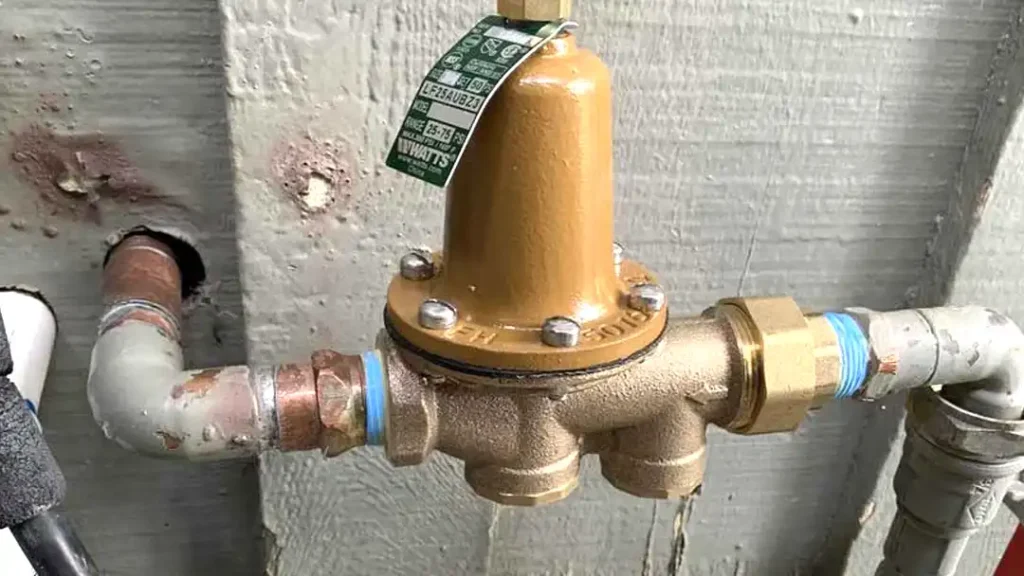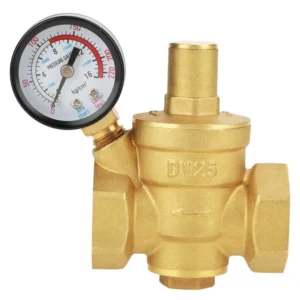In the realm of plumbing, the efficiency and functionality of water flow are paramount. From residential homes to industrial complexes, maintaining optimal water pressure is essential for a smooth-running operation.
At the heart of this operation lies the water pressure regulator, a device often overlooked yet indispensable in ensuring consistent pressure levels throughout the plumbing system.
What Is Water Pressure Regulation

Water pressure regulation is a critical aspect of plumbing infrastructure that directly impacts the performance of various fixtures and appliances. Whether it’s a showerhead, faucet, or washing machine, each component requires a specific pressure level to function optimally.
Too much pressure can lead to leaks, bursts, and damage to appliances, while insufficient pressure results in inadequate water flow and usability issues.
The Importance of a Properly Sized Water Pressure Regulator
The importance of a properly sized water pressure regulator cannot be overstated in the realm of plumbing. It serves as a critical component in maintaining the integrity and functionality of the entire plumbing system.
Here’s a deeper dive into why selecting the right size regulator is paramount:
- Preventing Damage: An improperly sized regulator can lead to fluctuating pressure levels, which can exert unnecessary strain on pipes, fittings, and appliances. Over time, this strain can result in leaks, bursts, and other forms of damage, necessitating costly repairs or replacements.
- Ensuring Consistency: A properly sized regulator ensures that water pressure remains within the desired range consistently. This consistency is essential for the optimal performance of various fixtures and appliances, such as faucets, showers, toilets, and dishwashers. It prevents issues like sputtering faucets or weak shower sprays, providing a seamless user experience.
- Protecting Appliances: Many appliances, such as washing machines, dishwashers, and water heaters, have specific pressure requirements for optimal operation. An incorrectly sized regulator can subject these appliances to either too much pressure, leading to premature wear and tear, or insufficient pressure, resulting in poor performance and reduced efficiency.
- Optimizing Efficiency: By maintaining consistent pressure levels throughout the plumbing system, a properly sized regulator helps optimize water usage and energy efficiency. It ensures that water is delivered at the right pressure without unnecessary wastage, contributing to lower utility bills and environmental sustainability.
- Compliance with Codes and Standards: Building codes and industry standards often mandate the use of properly sized regulators to ensure the safety and reliability of plumbing systems. Failure to comply with these requirements can result in regulatory fines, failed inspections, and potential liability issues in the event of property damage or personal injury.
The importance of a properly sized water pressure regulator lies in its ability to safeguard the plumbing system, enhance user comfort, and promote efficient water usage. Investing in the right size regulator upfront can save homeowners and property managers significant headaches and expenses down the line, making it a crucial consideration in any plumbing project or renovation endeavor.
What Should Water Pressure Regulator Be Set At

What size water pressure regulator do I need?
Determining the ideal setting for a water pressure regulator involves balancing several factors to ensure optimal performance and functionality.
While there isn’t a one-size-fits-all answer, here are some guidelines to consider when setting the pressure:
Manufacturer Recommendations:
Start by consulting the manufacturer’s specifications and guidelines for the specific regulator model you’re using. Manufacturers typically provide recommended pressure ranges based on the design and capabilities of their products.
Building Codes and Regulations:
Check local building codes and regulations to ensure compliance with pressure requirements in your area. Some jurisdictions may have specific guidelines regarding maximum allowable pressure levels to prevent damage to plumbing systems and appliances.
Property Needs and Usage:
Consider the water usage patterns and demands of your property. Residential homes, commercial buildings, and industrial facilities may have different pressure requirements based on the number of occupants, types of fixtures/appliances, and intended usage.
Appliance Requirements:
Certain appliances, such as water heaters, dishwashers, and irrigation systems, may have recommended pressure settings for optimal performance. Adjust the regulator to meet the requirements of these appliances while ensuring overall system compatibility.
Pressure Testing:
Conduct pressure testing throughout the plumbing system to identify existing pressure levels and any potential issues, such as pressure spikes or drops. Use a pressure gauge to measure pressure at various points and adjust the regulator accordingly.
Balancing Pressure:
Aim for a balance between sufficient pressure to meet the needs of fixtures and appliances and avoiding excessive pressure that could lead to damage or inefficiencies. A common recommendation is to set the regulator between 40 to 60 pounds per square inch (psi) for residential properties, although this may vary based on specific circumstances.
Adjustment and Monitoring:
Once the regulator is initially set, periodically monitor pressure levels and make adjustments as needed to maintain consistency and address any changes in usage patterns or system conditions. Regular maintenance and inspection can help ensure optimal regulator performance over time.
Ultimately, the ideal setting for a water pressure regulator depends on a combination of factors unique to each property and plumbing system. By considering manufacturer recommendations, local regulations, property needs, and appliance requirements, you can set the regulator at a level that balances functionality, efficiency, and durability while ensuring a reliable water supply for your property.
Factors Influencing Water Pressure Regulation
Several factors can affect water pressure regulation, including:
1. Water Supply Source
The source of water supply plays a significant role in determining the incoming pressure. Municipal water systems typically maintain consistent pressure levels, while private wells may experience fluctuations depending on various factors such as pump capacity and groundwater levels.
2. Plumbing System Design
The design and layout of the plumbing system can impact pressure levels throughout the network. Factors such as pipe diameter, length, and configuration can introduce friction and affect overall pressure distribution.
3. Demand Variations
Fluctuations in water usage patterns can influence pressure dynamics within the plumbing system. Peak demand periods, such as mornings and evenings, may result in temporary pressure drops due to increased consumption.
4. Elevation Changes
Changes in elevation along the water supply route can affect pressure levels, particularly in multi-story buildings or hilly terrain. Properly installed regulators account for these variations to maintain consistent pressure regardless of altitude changes.
Selecting the Right Water Pressure Regulator
When choosing a water pressure regulator, several factors should be considered to ensure optimal performance:
1. Pressure Rating
Select a regulator with a pressure rating suitable for the maximum expected pressure in your plumbing system. Over-sizing the regulator can lead to inefficiencies, while under-sizing may result in pressure spikes.
2. Flow Capacity
Consider the flow capacity of the regulator to accommodate the peak demand of your plumbing system. Oversized regulators can lead to pressure drops during high-demand periods, affecting usability and performance.
3. Material and Construction
Choose a regulator made from durable materials such as brass or stainless steel to ensure longevity and resistance to corrosion. Additionally, opt for models with robust construction and reliable seals to prevent leaks and maintain consistent pressure regulation.
4. Adjustable vs. Non-Adjustable
Depending on your specific requirements, decide whether an adjustable or non-adjustable regulator is more suitable. Adjustable regulators offer flexibility in fine-tuning pressure levels, while non-adjustable models provide simplicity and reliability.
Installation and Maintenance Considerations
Proper installation and regular maintenance are essential for maximizing the lifespan and performance of water pressure regulators. Follow these guidelines for optimal results:
1. Professional Installation
Hire a licensed plumber to install the water pressure regulator, ensuring compliance with local building codes and regulations. Proper installation prevents leaks, ensures proper function, and maintains warranty validity.
2. Periodic Inspection
Schedule routine inspections of the regulator to check for signs of wear, corrosion, or malfunction. Address any issues promptly to prevent potential damage to the plumbing system and maintain consistent pressure regulation.
3. Adjustment if Necessary
If your regulator is adjustable, periodically check and adjust the pressure settings as needed to accommodate changes in water usage patterns or system conditions. Follow manufacturer guidelines for proper adjustment procedures.
4. Replacement when Needed
Monitor the condition of the regulator and replace it if signs of deterioration or malfunction are detected. Upgrading to a newer model with advanced features may enhance performance and reliability.
Conclusion
Water pressure regulation is a crucial aspect of plumbing infrastructure that requires careful consideration and proper implementation. By understanding the factors influencing pressure dynamics and selecting the right regulator for your application, you can ensure consistent pressure levels, protect against damage, and optimize the performance of your plumbing system.

